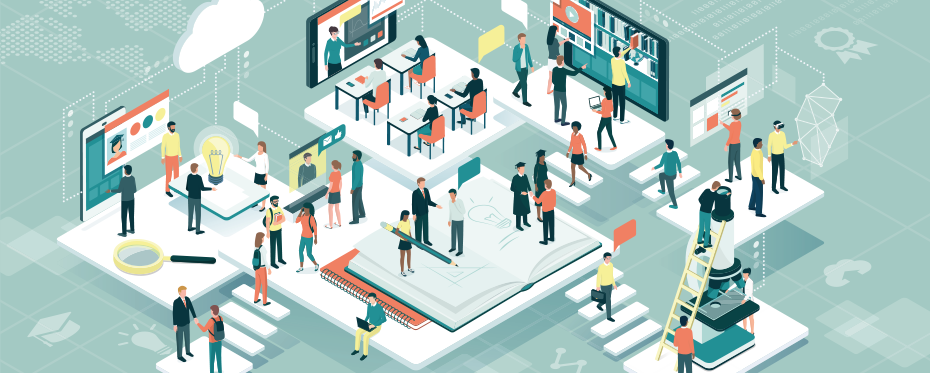Tag: collaboration
CyberHER: Bridging the gender gap in cybersecurity

The CyberHER: Bridging the Gender Gap in Cybersecurity project, led by Dr Mohammad Haseeb Zafar, director of the Cybersecurity and Information Networks Centre at Cardiff Metropolitan University, UK, colleague Dr Fiona Carroll, and Dr Sumaira Johar of the Institute of Management Sciences (IMSciences), Peshawar, Pakistan, addresses the global gender gap in cybersecurity. By promoting cybersecurity awareness for women, international collaboration, […]
Read More… from CyberHER: Bridging the gender gap in cybersecurity
Data-sharing for a greener future: How can JIDEP contribute?

As the global push toward sustainability moves beyond a trend to becoming necessary, we must address the inertia and challenges in securing a circular economy. JIDEP – a joint project by manufacturers, technology companies, and leading research organisations – proposes an ambitious but technically astute way to encourage companies to share valuable data. Industrial progress has long been defined by […]
Read More… from Data-sharing for a greener future: How can JIDEP contribute?
Probing Cancer: Immunotherapy and Molecular Imaging

The Singapore-based Cancer ImmunoTherapy Imaging (CITI) programme is a Singapore-wide collaborative research group, comprising 12 research institutes. CITI’s efforts are focused on the discovery and application of peptide-based imaging probes, which target immunotherapy treatment response biomarkers. Dr Edward G Robins, Head of Radiochemistry at the Singapore Bioimaging Consortium and Deputy Director of the NUS Clinical Imaging Research Centre, alongside his […]
Read More… from Probing Cancer: Immunotherapy and Molecular Imaging
Soil and groundwater contamination: An old and new issue needs to be solved

Dr Ming Zhang is an innovation coordinator at Geological Survey of Japan, AIST. Alongside his research group, he is advocating the importance of using interdisciplinary tools for sustainable remediation of contaminated soil and groundwater. Their research has shown that cost-effective and environment-friendly technologies such as the use of microorganisms to degrade organic contaminants and the use of minerals to immobilise […]
Read More… from Soil and groundwater contamination: An old and new issue needs to be solved
Digital Science: A more collaborative approach to research

Digital Science is a company that looks to improve old research practices with new tools and technologies. CEO Daniel Hook believes that investing in, supporting and promoting businesses and innovations that make the research process more open and efficient is the key to enabling researchers to make a real difference. Is it possible that in the future we might see […]
Read More… from Digital Science: A more collaborative approach to research
Patients as partners in research – The challenges for researchers of patient involvement

Modern clinical research often includes Patient and Public Involvement (PPI), in which patients play an active role in the research process. While the benefits of PPI are well recognised, little attention has been given to the challenges researchers face in implementing it. Recently, Professors Mogens Hørder and Marie Konge Nielsen of the University of Southern Denmark set out to discover […]
What team communication can tell us about team effectiveness

Meetings. Love them or hate them, they’re a regular feature of working life and there are countless studies on how to plan, run and make the most of them. Few studies, however, take a detailed view of the nature of the communication, interaction and collaboration that take place within meetings, especially team meetings. The research of Marcella Hoogeboom and Celeste […]
Read More… from What team communication can tell us about team effectiveness
Collaborate to innovate: How the InSPIRE Center at UCLan Cyprus brings together academics and industry

The Center of Interdisciplinary Science Promotion & Innovation Research Exploration (InSPIRE) at UCLan Cyprus aims to enhance scientific research through a series of collaborative partnerships in diverse scientific disciplines between academia and industry, carrying this out through a series of projects, educational activities and community engagement. InSPIRE’s co-founder, Dr Panayiotis Andreou, believes it is essential that the two sides work […]
Industrial-Academic collaboration: The key for C-H bond activation

A very hot and current scientific topic is the synthesis of active pharmaceutical ingredients (APIs), the burning question being “how can we make API synthesis efficient?”. A big step towards the answer was taken by Dr Guillaume Journot, senior scientist at Servier, France, and Dr Jean-François Brière, a CNRS senior research scientist at COBRA laboratory in Rouen, France. They proved […]
Read More… from Industrial-Academic collaboration: The key for C-H bond activation